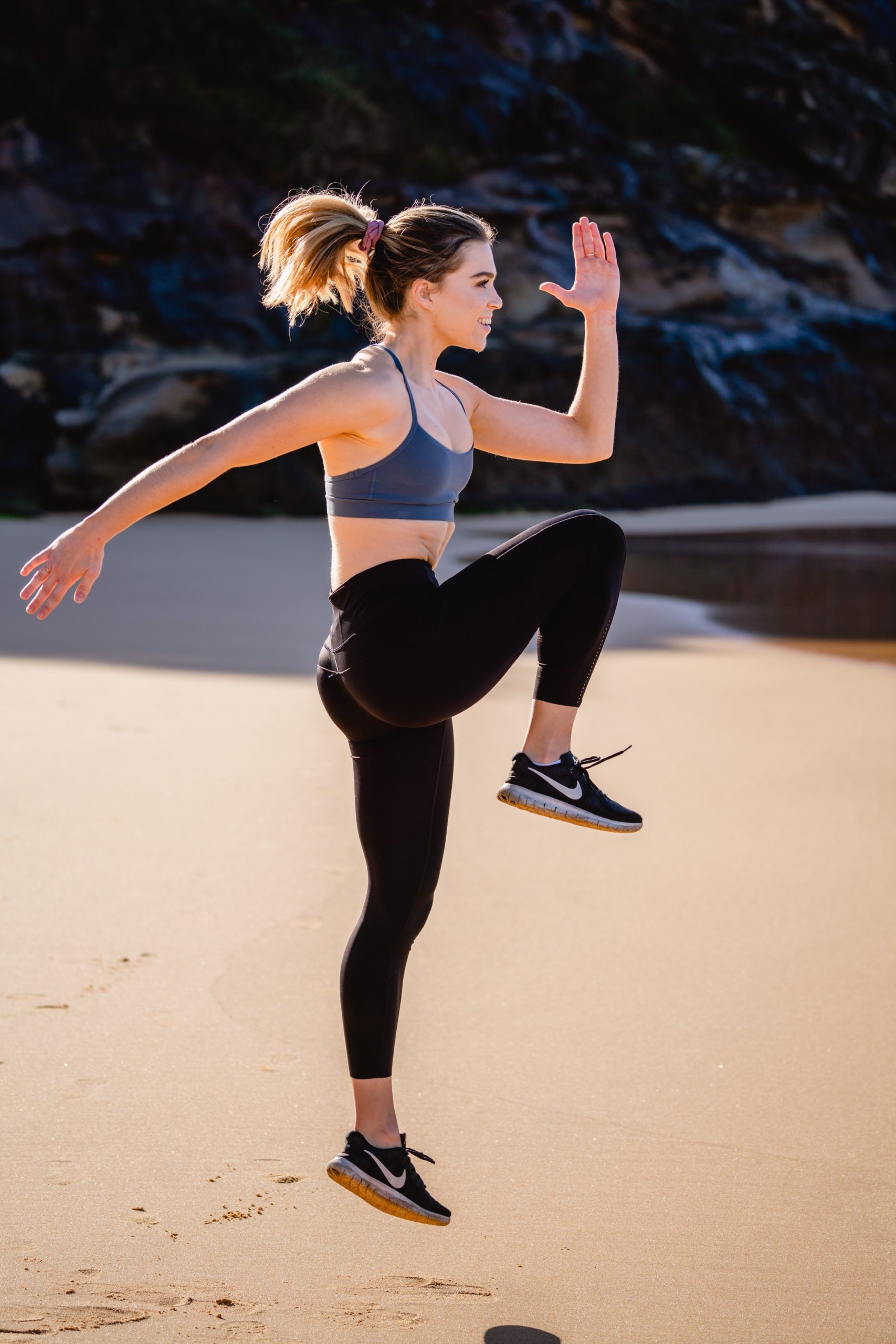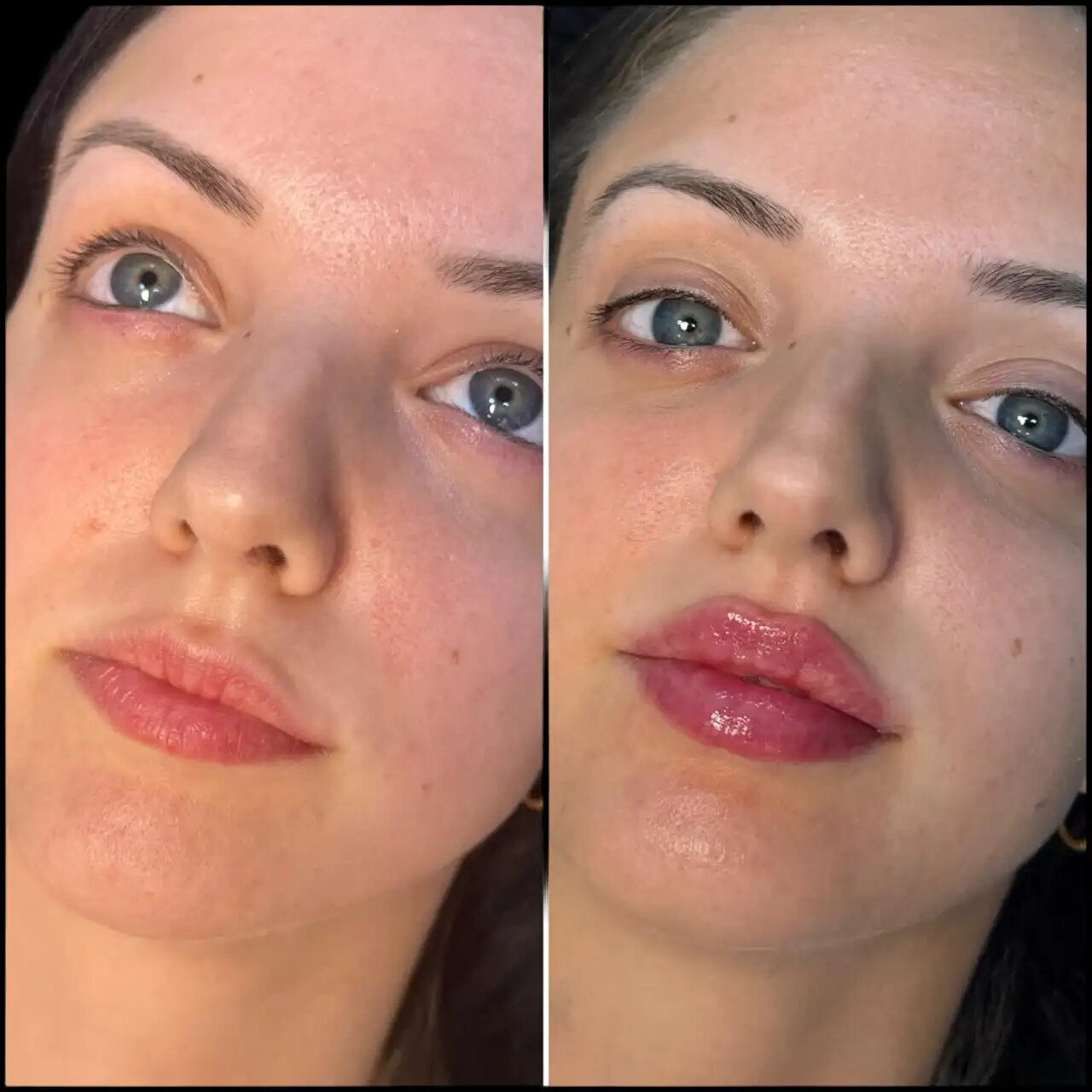Beauty Fitness
Breaking Down Beauty: Simple Tips for a Fitness Routine That Works for Everyone

Introduction
Are you tired of scrolling through Instagram and seeing picture-perfect fitness models with impossible-to-achieve physiques? You’re not alone. It’s easy to feel overwhelmed and discouraged by the endless stream of unattainable beauty standards. But don’t worry, breaking down beauty is easier than you think! In this post, we’ll share some simple tips for a fitness routine that works for everyone – regardless of age, body type or lifestyle. Say goodbye to unrealistic expectations and hello to feeling confident in your own skin!
Tips for a pre-workout routine
Before you begin your workout routine, there are a few things you should do to prepare your body and mind for optimal results. First, warm up your muscles with some light stretching or cardio. This will help prevent injuries and get your blood flowing. Next, eat a healthy snack or meal to give your body the energy it needs to power through your workout. Lastly, hydrate yourself by drinking plenty of water throughout the day and during your workout.
Now that you’re properly prepared, it’s time to focus on your actual workout routine. Here are a few tips to help you make the most of each session:
1. Set realistic goals. Don’t try to do too much too soon – this will only lead to frustration and discouragement. Start small and gradually work your way up as you get stronger and more comfortable with exercise.
2. Find an activity that you enjoy. If you dread going to the gym, chances are you won’t stick with it for long. Choose an activity that you actually look forward to doing, whether it’s biking, swimming, hiking, dancing, or something else entirely.
3. Mix things up. Doing the same thing every day quickly becomes boring (and ineffective). To keep yourself motivated, mix up your workouts by incorporating different activities and exercises into each session. This will also help prevent plateaus in your progress.
4. Make it a habit. The key to seeing results is consistency – commit to working out
Tips for a post-workout routine
There’s no one-size-fits-all answer to the question of what you should do after a workout. But there are some general principles that can help you create a post-workout routine that works for you.
First, give yourself time to cool down after your workout. This will help your body recover and reduce the risk of injury.
Second, hydrate! Drink plenty of water or fluids with electrolytes to replace what you’ve lost through sweat.
Third, refuel your body with nutrients. Eat a healthy snack or meal that includes protein and carbohydrates to help your muscles repair and rebuild.
Fourth, take some time to stretch. Stretching helps improve range of motion and can prevent soreness.
Finally, don’t forget to listen to your body. If you’re feeling tired or sore, take it easy and rest up for your next workout.
The best time of day to work out
The best time of day to work out really depends on what works best for you and your schedule. Some people prefer to work out in the morning because they feel more energetic and it jump-starts their day. Others prefer to work out in the evening because it helps them wind down from the day and get a good night’s sleep.
There are also people who like to split up their workout routine and do a little bit in the morning and a little bit at night. And there are those who like to workout on their lunch break or right after they get off work.
Really, the best time of day to workout is whenever you can fit it into your schedule and whenever you feel most comfortable doing it. However, there are some general tips that can help you make the most out of your workout routine no matter when you do it.
How often should you work out?
There is no one-size-fits-all answer to this question, as the frequency of your workouts will depend on a number of factors, including your fitness goals, schedule, and preferred workout activities. However, most experts recommend working out at least three times per week for optimal results. If you’re just starting out, you may want to begin with two workouts per week and gradually increase your frequency as you become more comfortable with exercise. Remember that even small amounts of physical activity can have health benefits, so don’t be discouraged if you can’t fit in a lengthy workout every day. Just do what you can to get active and move your body!
What type of workout is best for you?
The first step to starting a fitness routine is finding out what type of workout is best for you. There are many different types of workouts available, so it’s important to find the one that fits your needs and interests.
If you’re looking for a workout that is low-impact and easy on the joints, swimming or water aerobics may be a good option for you. These activities provide a great cardio workout without putting too much stress on the body.
For those who are looking for a more challenging workout, consider joining a gym or taking up running. These activities will help you get in shape and tone your muscles. If you’re new to exercise, start slowly and gradually increase the intensity of your workouts.
It’s also important to find an activity that you enjoy doing. If you don’t enjoy the workout you’re doing, you’re less likely to stick with it in the long run. Find something that challenges you and makes you want to come back for more.
With so many options available, there’s sure to be a workout that’s perfect for you. Start exploring today and find the one that fits your lifestyle and goals.
Conclusion
A fitness routine can help you reach your health and beauty goals. Doing the right exercises, getting enough rest, and eating a balanced diet are key for finding success in any workout plan. Remember to be patient with yourself and make changes slowly so that it is easier to stick with it long term. With these tips, you’ll be on your way to achieving the look of your dreams!
Beauty Fitness
Most Popular Filler Treatments in Dubai for Natural Results

Introduction
In today’s fast-paced world of beauty and wellness, non-surgical enhancements have taken center stage especially filler in Dubai. Whether it’s to restore volume, contour facial features, or reduce signs of aging, the demand for fillers in Dubai has surged due to natural-looking results, minimal downtime, and quick procedures. At the heart of this transformation is Perfect Doctors Clinic for dermal fillers in Dubai, widely recognized as the Best Fillers Clinic in Dubai and the Best Aesthetics Clinic in Dubai.
This comprehensive guide will explore the most popular types of Fillers treatment in dubai, current trends, and everything you need to know about achieving youthful, natural-looking results with the best fillers in Dubai.
Why Fillers in Dubai Are So Popular
1. A Leading Destination for Aesthetic Excellence
Fillers in Dubai have become a go-to treatment for residents and international visitors alike. Thanks to renowned experts, modern clinics, and the rise in celebrity treatment in Dubai, aesthetic procedures have become more mainstream than ever. Perfect Doctors Clinic for dermal fillers in Dubai sets the standard with advanced techniques and unmatched patient care.
2. Celebrity Influence and Advanced Techniques
The popularity of celebrity treatment in Dubai has fueled interest in non-invasive beauty solutions. Celebrities rely on Perfect Doctors Clinic for dermal fillers in Dubai for their expertise and discretion, making it the destination for the most refined filler injections in Dubai.
Most Popular Types of Fillers in Dubai
1. Lip Fillers in Dubai
Among the top-requested procedures at the Best Fillers Clinic in Dubai, lip fillers in Dubai remain a favorite for adding volume, shape, and symmetry. Using Juvederm fillers in Dubai, the specialists ensure perfectly plump yet natural-looking lips.
2. Cheek Fillers in Dubai
Cheek fillers in Dubai are ideal for those experiencing facial volume loss due to aging. The skilled team at Perfect Doctors Clinic for dermal fillers in Dubai uses hyaluronic acid fillers in Dubai to lift the mid-face and sculpt youthful contours.
3. Dermal Fillers for Anti-Aging in Dubai
Dermal fillers for anti-aging in Dubai smooth out wrinkles, nasolabial folds, and marionette lines. With long-lasting dermal fillers in Dubai, patients can enjoy youthful skin for up to 18 months.
Popular Ingredients in Fillers in Dubai
1. Hyaluronic Acid Fillers in Dubai
Hyaluronic acid fillers in Dubai are the most sought-after due to their natural compatibility with the skin. These fillers provide hydration and volume without an artificial appearance.
2. Juvederm Fillers in Dubai
Used widely at Perfect Doctors Clinic for dermal fillers in Dubai, Juvederm fillers in Dubai are known for their smooth consistency and long-lasting results, making them ideal for a variety of facial treatments.
Expertise You Can Trust
Dermal Fillers Specialists in Dubai
At Perfect Doctors Clinic for dermal fillers in Dubai, you are treated by highly trained dermal fillers specialists in Dubai. Their skill ensures that every procedure from fillers injection in Dubai to full facial rejuvenation—delivers results you’ll love.
Understanding the Cost of Fillers in Dubai
1. The Cost of Fillers in Dubai Is Affordable and Transparent
For those curious, the cost of fillers in dubai is often more affordable than expected, especially considering the high standard of care at Perfect Doctors Clinic for dermal fillers in Dubai.
2. Fillers Cost in Dubai Breakdown
- Lip fillers in Dubai: From AED 1,500
- Cheek fillers in Dubai: Varies by volume
- Full-face rejuvenation: Personalized pricing
Fillers in Dubai Jumeirah starts at AED 1,500, making it accessible to many who desire a premium experience at the Best Aesthetics Clinic in Dubai.
3. Dermal Fillers Dubai Price Transparency
The dermal fillers Dubai price depends on the area treated and the type of filler used. At Perfect Doctors Clinic for dermal fillers in Dubai, prices are discussed clearly during consultation, ensuring complete transparency.
Fillers Injection in Dubai: What to Expect
1. Before the Procedure
During your initial consultation at the Best Fillers Clinic in Dubai, your aesthetic goals are reviewed by expert practitioners. They will recommend the most suitable fillers in Dubai based on facial anatomy and desired outcomes.
2. During the Procedure
The fillers injection in Dubai process is swift and nearly painless. Filler injections in Dubai are performed with precision using ultra-fine needles or cannulas to minimize discomfort and bruising.
3. Aftercare for Long-Lasting Results
Following your treatment, aftercare instructions will be provided to ensure optimal results and minimize swelling. With proper care, long-lasting dermal fillers in Dubai can maintain their effect for over a year.
Conclusion
If you’re looking for safe, professional, and natural-looking fillers in Dubai, trust the experts at Perfect Doctors Clinic for dermal fillers in Dubai. From lip fillers in Dubai to cheek fillers in Dubai, and full-face rejuvenation, their team of dermal fillers specialists in Dubai ensures every treatment enhances your natural beauty.
With fillers in Dubai Jumeirah starts at AED 1,500, luxury aesthetic treatments are now within reach. Whether you’re inspired by Celebrity treatment in dubai or simply want to age gracefully, the best fillers in Dubai await you.
For transformative results with the highest safety standards, choose Perfect Doctors Clinic for dermal fillers in Dubai—the Best Aesthetics Clinic in Dubai and home to the most in-demand fillers in Dubai today.
FAQs
Q.1 How safe are fillers in Dubai?
At Perfect Doctors Clinic for dermal fillers in Dubai, all fillers in Dubai are FDA-approved and administered by licensed dermal fillers specialists in Dubai, ensuring maximum safety.
Q.2 How long do the results from fillers in Dubai last?
Most fillers in Dubai, especially hyaluronic acid fillers in Dubai and Juvederm fillers in Dubai, last 6 to 18 months depending on the area treated.
Q.3 Is there any downtime after filler injections in Dubai?
There is minimal to no downtime after filler injections in Dubai. You may experience slight swelling or redness, but most clients resume daily activities immediately.
Q.4 Can I combine different types of fillers in Dubai in one session?
Yes, Perfect Doctors Clinic for dermal fillers in Dubai offers combination treatments using the best fillers in Dubai to address various areas of the face in one session.
Q.5 What makes Perfect Doctors Clinic the Best Fillers Clinic in Dubai?
From the most advanced fillers in Dubai to expert care and a premium patient experience, Perfect Doctors Clinic for dermal fillers in Dubai sets itself apart as the trusted name in the city.
Beauty Fitness
Understanding the Sinus Lift Procedure: When and Why It’s Needed

Introduction: What Is a Sinus Lift?
A sinus lift is a specialized surgical procedure commonly performed in preparation for dental implants. When the upper jaw lacks sufficient bone height—especially near the molars and premolars—a sinus lift becomes essential to ensure a stable foundation for implants. This procedure involves elevating the sinus membrane and placing bone graft material in the maxillary sinus area to increase bone volume. It’s a critical step in many implantoazlogy dental treatments, especially for patients who have experienced bone loss due to gum disease, tooth loss, or natural anatomical limitations.
The Role of Dental Elevators in Sinus Lift and Implant Surgery
Precision Tools for Effective Surgery
During a sinus lift, dental elevators play a pivotal role. These instruments are used to gently lift the sinus membrane, making room for bone grafting material. Their curved and narrow design allows for precision and safety when navigating the delicate sinus area. Additionally, dental elevators are instrumental in performing atraumatic extractions, preserving bone structure for better implant outcomes.
Dental professionals rely on various types of elevators—such as periosteal elevators and sinus lift elevators—to create a clear surgical field and minimize trauma during the lift. By maintaining the integrity of the surrounding bone and soft tissues, these tools significantly increase the success rate of both the sinus lift and subsequent implant placement.
When Is a Sinus Lift Needed?
A sinus lift is often necessary under the following conditions:
1. Bone Loss in the Upper Jaw
When teeth have been missing for a long time, the bone naturally resorbs, leading to insufficient height and density for implant placement.
2. Natural Anatomy of the Sinus
Some individuals naturally have large sinuses or thinner bone structure in the upper jaw, which limits the available space for implant placement.
3. Trauma or Infection
Previous infections, surgeries, or facial trauma may result in bone deterioration, requiring augmentation via sinus lift.
Procedure Overview: How a Sinus Lift Works
Step-by-Step Breakdown
-
Initial Examination and Imaging
Cone-beam CT scans are used to assess bone height and sinus anatomy. -
Surgical Access
A small incision is made in the gum tissue, and a window is created in the bone to access the sinus membrane. -
Membrane Elevation
Using dental elevators, the sinus membrane is carefully lifted without tearing. -
Bone Grafting
Bone graft material is inserted into the newly created space beneath the membrane. -
Healing Period
The area is allowed to heal for 4–9 months, during which the graft integrates with natural bone. -
Implant Placement
Once healing is complete and sufficient bone volume is achieved, dental implants are placed.
Composite Filling Instruments in Post-Implant Restorations
After successful sinus lift and implant placement, dental composite filling instruments are often used to restore function and aesthetics. These tools are essential in crafting precise, durable, and natural-looking restorations over implants.
Types of Composite Filling Instruments
1. Plastic Composite Instruments
These tools are designed with non-stick surfaces to handle composite material without pulling or dragging, making them ideal for layering and shaping.
2. Condensers and Pluggers
Used to compress composite material into cavities or onto abutments, ensuring long-lasting and tight restorations.
3. Carvers
Carvers help mimic the natural anatomy of teeth by refining cusps, ridges, and grooves in the composite material.
4. Burnishers
Essential for smoothing the surface of the restoration and enhancing the polish, ensuring it blends seamlessly with natural enamel.
Why Dental Filling Tools Matter in Implantology Dental
High-quality dental filling tools directly influence the outcome of implant-supported restorations. Precision instruments allow clinicians to sculpt, layer, and polish composite materials effectively, ensuring optimal function and esthetics. Whether restoring a single tooth or multiple units, these tools are crucial in modern implantology dental procedures.
Best Practices for a Successful Sinus Lift and Restoration
1. Accurate Diagnosis
Comprehensive imaging and examination are vital for planning a successful sinus lift and ensuring the availability of sufficient bone.
2. Gentle Handling with Dental Elevators
Use the appropriate elevators for the task to avoid trauma to the sinus membrane and adjacent structures.
3. Quality Filling Instruments for Restoration
Invest in premium dental composite filling instruments to ensure long-lasting, natural-looking outcomes for post-implant restorations.
4. Follow-Up Care
Consistent follow-ups and proper oral hygiene are essential to maintain the longevity of the implant and the integrity of the bone graft.
Conclusion: Enhancing Care for the Luxating Tooth and Beyond
The sinus lift procedure is an integral part of advanced dental implantology, allowing clinicians to restore smiles where bone loss once posed a barrier. The use of precision tools—especially dental elevators—ensures the success of both the sinus lift and the implant placement that follows. Additionally, dental filling tools and composite instruments complete the restorative phase, bringing back function and aesthetics.
Whether treating a missing tooth or managing a luxating tooth, the combination of clinical skill and the right instruments leads to outstanding outcomes. As dental technologies evolve, the timeless value of tools like dental elevators remains essential in achieving patient satisfaction and long-term success.
Beauty Fitness
Your Comprehensive Guide to Yoga Teacher Training

re you passionate about yoga and ready to deepen your practice? Do you dream of sharing the benefits of yoga with others as a certified instructor? If so, a Yoga Teacher Training Course (YTTC) could be the life-changing journey you’ve been searching for. Whether you want to teach professionally or simply enrich your own understanding, this comprehensive guide will walk you through everything you need to know about yoga teacher training in a friendly, approachable way.
What is a Yoga Teacher Training Course?
A Yoga Teacher Training Course is a structured program designed to equip you with the knowledge, skills, and confidence to teach yoga safely and effectively. The most common certification is the 200-hour YTTC, which covers yoga philosophy, anatomy, teaching methodology, and practical teaching experience. Advanced courses, such as the 300-hour or 500-hour YTTC, are also available for those who wish to deepen their expertise.
Why Consider Yoga Teacher Training?
1. Deepen Your Practice
Even if you don’t plan to teach, YTTC is an incredible opportunity to explore yoga beyond the poses. You’ll learn about the history, philosophy, and subtle aspects of yoga that aren’t always covered in regular classes.
2. Share Your Passion
If you love yoga and want to inspire others, teacher training gives you the tools to guide students safely and confidently. Teaching can be a rewarding way to connect with your community and make a positive impact.
3. Personal Growth
Yoga teacher training is as much a journey inward as it is outward. Many trainees report increased self-awareness, improved mental clarity, and a stronger sense of purpose.
4. Career Opportunities
With a recognized certification, you can teach in studios, gyms, schools, retreats, or even start your own classes. Yoga teaching can be a flexible, fulfilling career or a meaningful side pursuit.
What Will You Learn in a Yoga Teacher Training Course?
A comprehensive YTTC covers a wide range of topics, including:
-
Asana (Physical Postures): Detailed breakdown of poses, alignment, and modifications.
-
Pranayama (Breathing Techniques): Learn to harness the power of breath for energy and relaxation.
-
Yoga Philosophy: Explore ancient texts like the Yoga Sutras and Bhagavad Gita.
-
Anatomy & Physiology: Understand how yoga affects the body and how to keep students safe.
-
Teaching Methodology: Develop your voice, sequence classes, and manage groups.
-
Meditation & Mindfulness: Techniques to cultivate focus and inner peace.
-
Ethics & Lifestyle: Embrace the yogic way of living on and off the mat.
What to Expect During Your Training
Yoga teacher training is an immersive experience. Here’s what a typical day might look like:
-
Morning: Meditation, pranayama, and asana practice.
-
Midday: Lectures on philosophy, anatomy, or teaching skills.
-
Afternoon: Practice teaching, group discussions, and workshops.
-
Evening: Restorative yoga, journaling, or group reflection.
Most courses last between 3-6 weeks for intensive formats, or several months for part-time programs.
Choosing the Right Yoga Teacher Training
With so many options, picking the right course can feel overwhelming. Here are some tips to help you decide:
1. Accreditation
Look for programs accredited by organizations like Yoga Alliance. This ensures your certification is recognized worldwide.
2. Style of Yoga
Choose a course that matches your interests—Hatha, Vinyasa, Ashtanga, Kundalini, or another style.
3. Location
Would you prefer a local studio, a tropical retreat, or an online course? Each offers unique benefits.
4. Faculty
Research the teachers’ backgrounds and read reviews from past students.
5. Schedule & Cost
Make sure the program fits your lifestyle and budget. Some offer scholarships or payment plans.
Is Yoga Teacher Training Right for You?
You don’t need to be able to do advanced poses or have years of experience. What matters most is your passion, commitment, and willingness to learn. YTTC welcomes people of all ages, backgrounds, and body types.
Tips for Success in Your Yoga Teacher Training
-
Stay Open-Minded: Be ready to learn, unlearn, and grow.
-
Practice Regularly: The more you practice, the more you’ll absorb.
-
Connect with Peers: Your fellow trainees can become lifelong friends and support.
-
Ask Questions: Don’t be afraid to seek clarification or help.
-
Take Care of Yourself: Rest, hydrate, and listen to your body.
Life After Yoga Teacher Training
Congratulations—you’re a certified yoga teacher! Now what?
-
Start Teaching: Offer classes to friends, family, or at local studios.
-
Keep Learning: Attend workshops, read books, and continue your education.
-
Find Your Niche: Maybe you love teaching kids, seniors, or athletes—explore your interests.
-
Build Your Community: Use social media, workshops, or retreats to connect with students.
-
Live Your Yoga: Remember, teaching is about embodying the principles of yoga in everyday life.
Final Thoughts
Yoga teacher training is more than just a course—it’s a journey of transformation. Whether you want to teach or simply deepen your understanding, YTTC can open doors to new possibilities, friendships, and self-discovery. If you feel the call, trust yourself and take the leap. The path of yoga is waiting for you!
Visit: www.theyogainstitute.org
-
Business2 years ago
Cybersecurity Consulting Company SequelNet Provides Critical IT Support Services to Medical Billing Firm, Medical Optimum
-
Business2 years ago
Team Communication Software Transforms Operations at Finance Innovate
-
Business2 years ago
Project Management Tool Transforms Long Island Business
-
Business2 years ago
How Alleviate Poverty Utilized IPPBX’s All-in-One Solution to Transform Lives in New York City
-
health2 years ago
Breast Cancer: The Imperative Role of Mammograms in Screening and Early Detection
-
Sports2 years ago
Unstoppable Collaboration: D.C.’s Citi Open and Silicon Valley Classic Unite to Propel Women’s Tennis to New Heights
-
Art /Entertainment2 years ago
Embracing Renewal: Sizdabedar Celebrations Unite Iranians in New York’s Eisenhower Park
-
Finance2 years ago
The Benefits of Starting a Side Hustle for Financial Freedom































